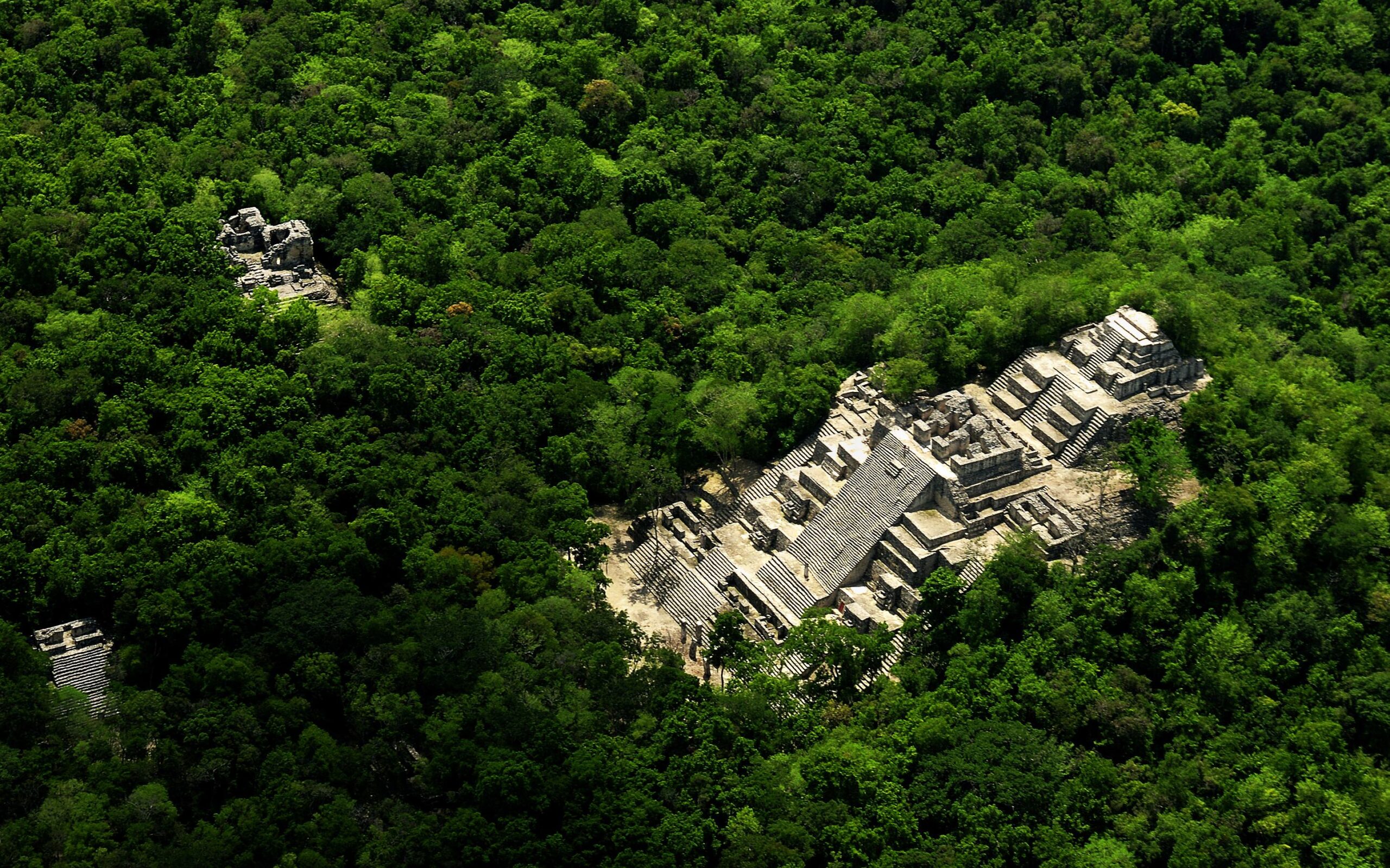CALAKMUL
The archaeological zone of Calakmul qualified as Heritage of Humanity by UNESCO in 2002, is the second natural bigger lung of the american continent and the bigger tropical jungle of Mexico, it has 723 hectares, where 38 mayan architectural centers are located. It is an exceptional cultural and natural landscape, because it keeps vestiges which are almost intact, of the relatively early development of an splendid civilization in an unfriendly surrounding within the tropical jungle. It hosteses around 86 species of mammals (jaguar, puma, ocelot, margay, young lion, bear anthill, spider monkey, and tapir, among others), 282 birds’ species, 50 reptiles species, 400 species of butterflies and 73 types of wild orchids.

Due to the fact that this region was one of the most densely populated at the mayan period, the architectural legacy of this civilization can be admired everywhere in sites as Becán, city surrounded by a defense unique pit, Chicanná, Río Bec, Hormiguero, Blamkú y Xpujil.
The most recent investigations have concluded that Calakmul is the most important city of the Mayan Classic and together with Tikal and Palenque led the political organization of the highlands. The hieroglyphical studies have realized a history of wars between Calakmul and Tikal for almost one century of history, which talks about the political rivalry of these cities. A unique urban planning can be observed, with big ceremonial plazas and residential developments. Besides this, it is the place where a greater number of mayan steles have been founded.
